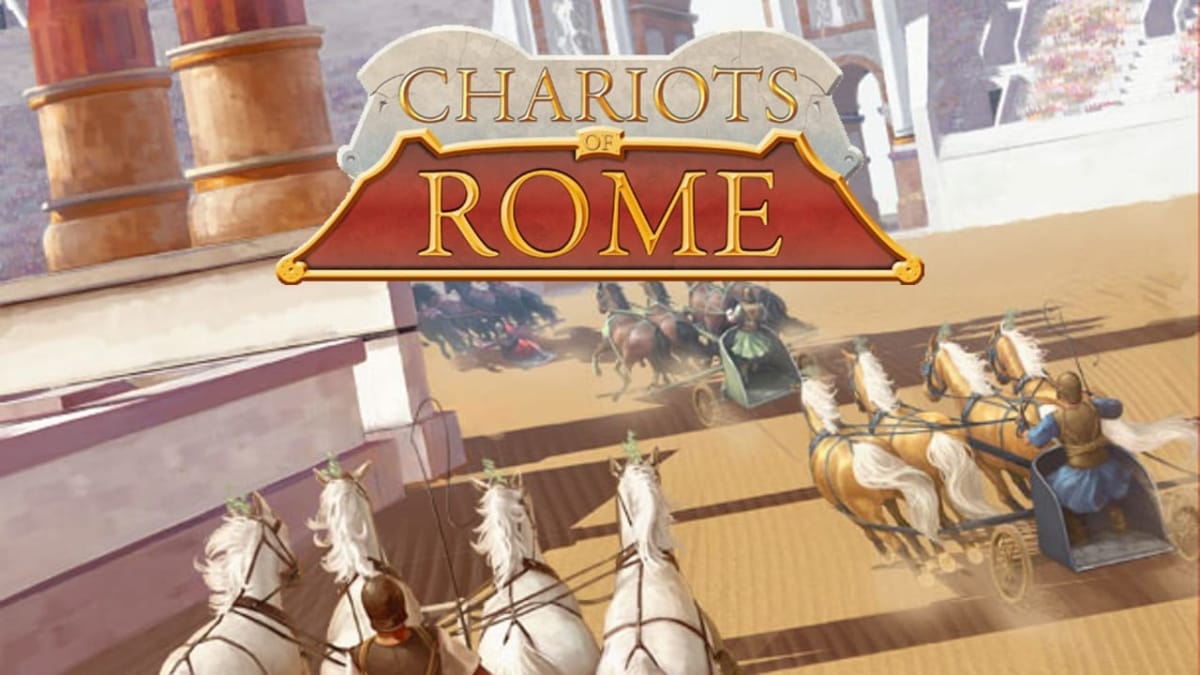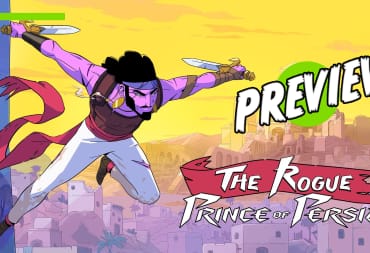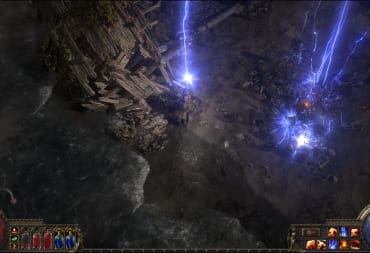Humanity has probably been racing from the moment we figured out how to draw a line and run to it. We race on foot, we race on horseback, and in modern times we race cars, boats, and even airplanes. Hundreds of years ago, one of the coolest spectacles you could hope to see at the Circus Maximus was the chariot races. Cemented in Western pop culture in the sword-and-sandal film Ben Hur, chariot races were brutal affairs where the drivers raced around the track of a circus. It was shockingly common to modern stock car racing - teams were sponsored by wealthy patrons, the drivers went dangerously fast around a circular track, and the best part was probably the crashes. Chariots of Rome by Victory Point Games purports to deliver all of the fun and chaos of chariot races in a turn-based game and I set out to see if they delivered.
Gameplay takes place on a large board representing the circus with six distinct lanes and a bevy of alternating spaces. A standard race will have players commanding either one or two chariots of the same color which are represented on the board by Charioteer tokens. Each chariot has an associated mat that players will use to track their stats using tokens while they progress through the race. Additionally, players will select a Charioteer to drive their chariot; each Charioteer has special abilities that change up the rules a little bit.
When my tabletop group initially set the game up, we had a bit of a difficult time with the rules. This wasn't for lack of clarity on the part of Victory Point Games; rather, it was for lack of brevity. As we had a pre-release copy, the rules were still a work in progress and a quick play guide had not yet been formulated. (The latest version of the rules we've received has since rectified this issue and included a quick reference sheet detailing the gameplay basics for easy reference.) Despite these initial difficulties, I can state that the rules of the game were designed very well and very clearly - we were able to pick up everything in our subsequent sessions without having to refer back to the rules too often. Everything made sense and was relatively easy to understand.
Once players have their chariots and Charioteers selected, they are issued a series of tokens for tracking their stats. Endurance is exactly what is says on the tin - a number representing how much endurance your horses have. Tactics are used to commit attacks, strategically gain a speed boost, or reduce negative penalties from Action cards. Rattled is a measure of how much your Charioteer is freaking out - after all, it takes a lot of fortitude to maintain your composure when some jerk named Gaius Smaximus is cracking you in the face with a whip. Finally, the players receive markers to track what lap their chariot(s) is on, the speed level, and a start token for counting out spaces.
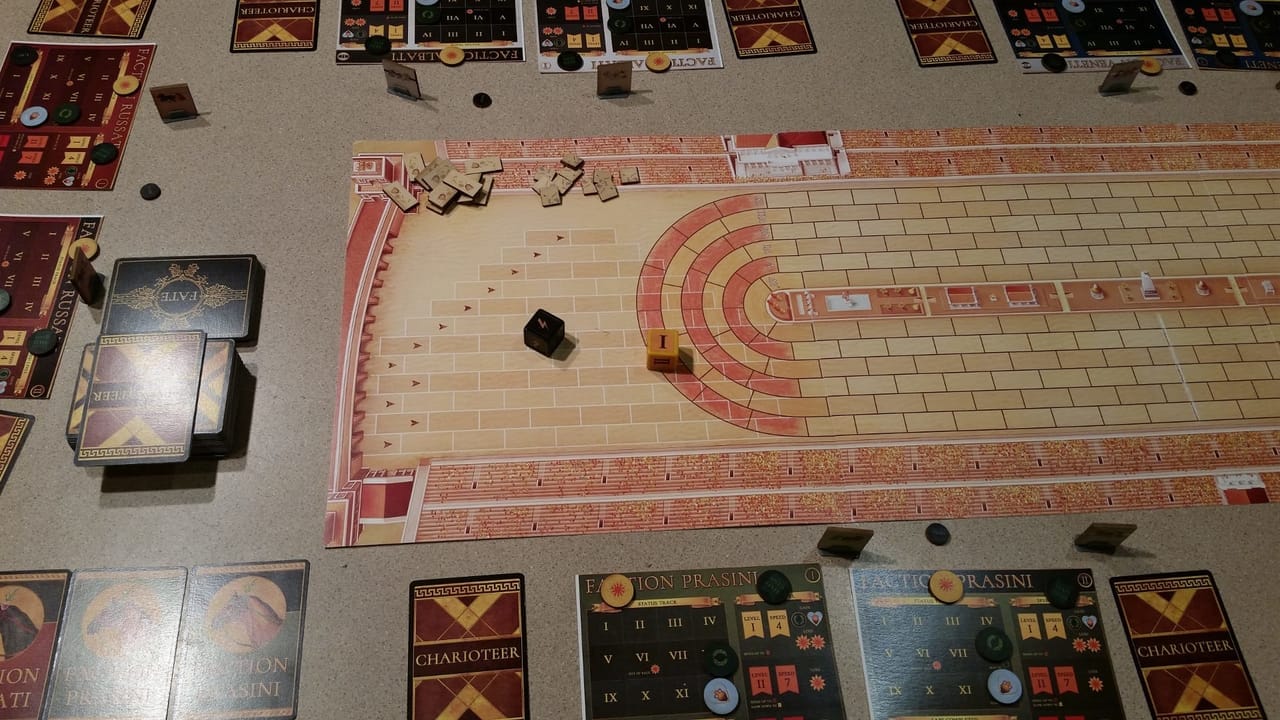
After everyone has all of their bits and pieces, the Initiative deck is composed. Each chariot has a matching card which is shuffled into this deck. At the beginning of every round, this deck is shuffled and the cards are revealed to determine the turn order for that particular round. The game begins with a shuffle of the Initiative deck and players can choose between their starting positions. The Initiative deck gets put together once more and the game begins proper.
During the course of the race, Charioteers take their turns in the order of the Initiative deck. Typically, a turn will consist of adjusting their speed, applying any bonuses or penalties, making their move, and (optionally) making a single attack against another chariot. That's the basics of it - of course, some caveats exist. The rules of the game forbid any attacking before everyone has exited the first turn - after all, you have to at least give the appearance of an honest race before trying to ram your opponent into the stadium wall. The "Favor of the Gods" mechanic and the penalty for Overtaking also do not apply until everyone has exited the first turn.
This isn't a simple "move X number of spaces" game like one might expect it to be at first glance. This might be the first game I've ever played that has Action Cards that I don't want to grab. Action Cards are applied to you when you sustain an attack, overtake a chariot or obstacle, or enter a corner at too fast of a speed. You'll have to apply those Action Cards either immediately or with each space you move (depending on how you got them), and you can cancel them out by spending Tactics points. Rarely, an Action Card may Wound your Charioteer, completely removing the ability to use their special ability for the rest of the race. The most common way a player will pick up Action Cards is cornering.
Each of the six lanes has a different number at the entrance of a corner. If the combination of your movement spaces & rattled stat is equal or lower than that number, you're fine. If the combination is higher you must draw Action Cards equal to the difference. You must then apply the effects of one Action Card from your Cornering Stack for each space you move. Most of the time you'll just lose stats, but sometimes you'll swerve and run the risk of crashing into an obstacle or wall. When you do crash, you have to immediately draw an Action Card and apply its Danger effect. Unsurprisingly, Danger effects are the most dangerous section of Action cards. They will often feature 2-3 reductions in stats, and getting any one of your critical stats past a certain threshold will result in being knocked out of the game.
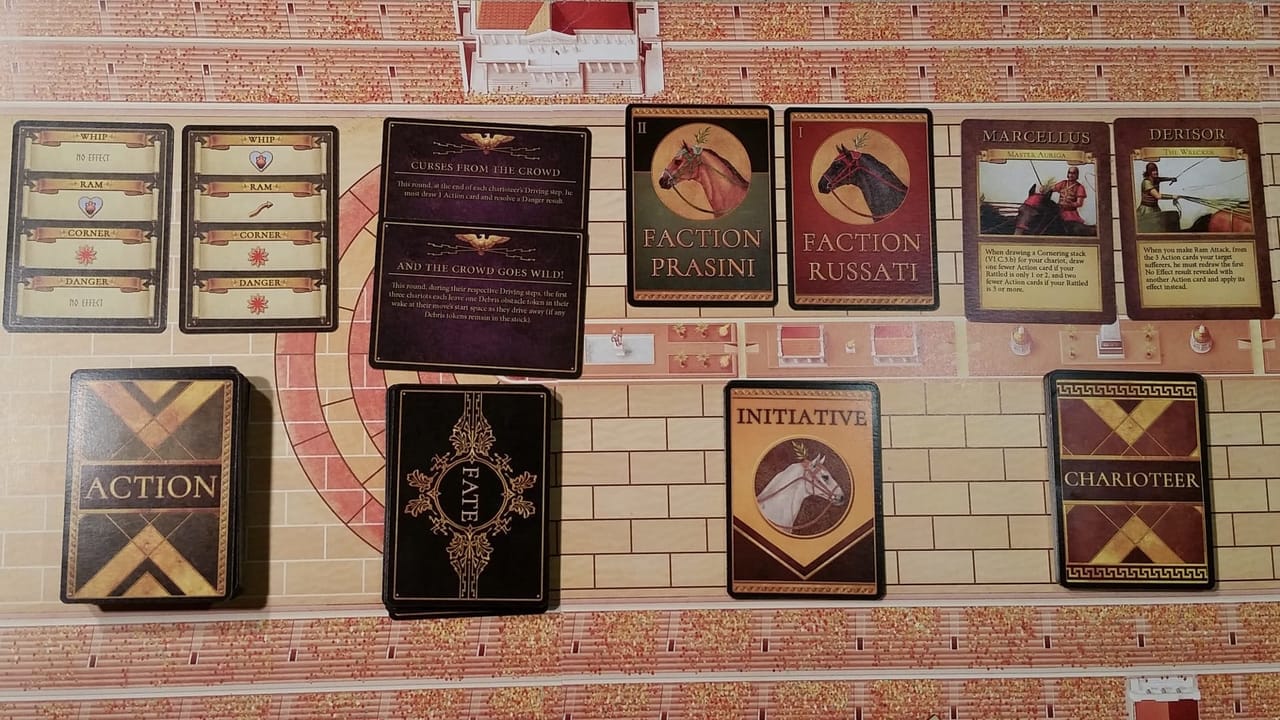
The gods themselves will intervene in your game, though they are kind enough to wait until everyone has exited the first turn. A Fate Die must be rolled by the first person in the Initiative stack. Three of the die's faces will give everyone in the game a stat bonus - either an increase to their Endurance or Tactics stat or a reduction to their Rattled stat. However, the other three faces of the die result in a Fate card being drawn. These change up the rules of the game for one round. For example, one particular Fate card made all attacks cost absolutely nothing and made it more difficult to luck out of any damage by drawing a "No Effect" result. The Fate Cards add a nice hint of randomness that keeps the game fresh.
A typical race ends in one of two ways. If the players have mostly been playing nice, the first person to cross the finish line on the last lap triggers the final round. Everyone who has a turn left in the round may play their turn, and the person who is the furthest past the finish line at the end of that round will win the game. Races with fewer Chariots (or with more overall violence) can finish when everyone but a single chariot (or team) has been eliminated.
My tabletop group has played three games of Chariots of Rome. Each of the four players controlled one chariot apiece in the first game, and the subsequent games had each player commanding two chariots. It is my opinion that the game is more fun (and more hectic!) when there are more chariots on the board overall. Too few chariots will simply result in a lot of space to move around and not much in the way of conflict, and Chariots of Rome really shines when the players are weaving around each other and whipping their opponents in the face.
I can't speak to the quality of the components of the final product as I received a preview copy of the game; what I received isn't necessarily indicative of what will end up on store shelves. However, I do have to say that the components were sturdy and made of excellent quality material. I had not been sent the needed dice in error, and while the developers were nice enough to let me know how the dice were set up (to substitute my own D6s) they also took the time to correct the issue entirely by sending me the missing dice in the mail. I couldn't tell you what will be in the finished product, but I can tell you that their preview copy was up to the sort of standard I would expect from a finished product and they were great about getting my issue resolved.

So, did I enjoy Chariots of Rome? My tabletop group is very candid with me, and at the end of our last play session they indicated that they enjoyed themselves but they weren't super enthusiastic about the game, either. Chariots of Rome undoubtedly makes for a fun, compelling experience. Whether or not it will have staying power with your tabletop group comes down to whether or not the game fits your tastes. In our case, it wasn't the style of game were the most fond of, but we nonetheless had a lot of fun playing it.
Chariots of Rome makes for great fun and a novel experience when you have a few people around. It does take a bit of time to play and you'll need a decent-sized surface to play it on, but it still makes for an entertaining experience with your friends. If the idea of the game sounds like fun to you (or you're the kind of person who has seen Ben Hur 27 times), you might want to pick up Chariots of Rome. A Kickstarter for the game is currently underway, and you can read more about the game on Victory Point Games' website.
The copy of Chariots of Rome used for this preview was provided by Victory Point Games.
Does Chariots of Rome seem like the sort of game you'd like to play with your tabletop group? Would you prefer a game like this have randomized elements to it or do you think it should be all about the strategy and management of resources? Let us know in the comments below!
Previews you can trust: To ensure you're getting a fair, accurate, and informed review, our experienced team spends a significant amount of time on everything we preview. Read more about how we review games and products.
Have a tip, or want to point out something we missed? Leave a Comment or e-mail us at tips@techraptor.net
